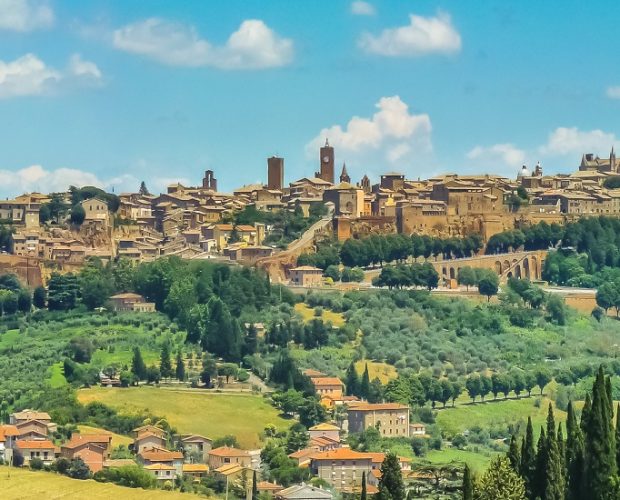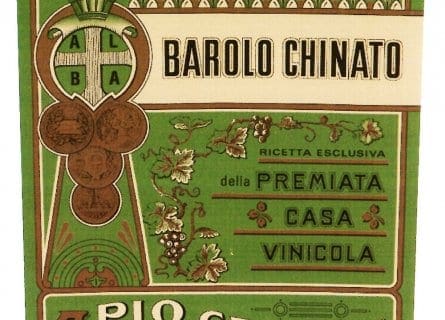
Assisi Travel Guide
A Timeless Tapestry of Medieval Charm, Historical Richness, and Culinary Delights in Italy's Heart
This beautiful medieval town, with its delightful narrow alleyways and streets, superb views of the Umbrian countryside, and fountain-splashed piazzas, is undoubtedly one of Italy’s most exquisite architectural masterpieces. Assisi has drawn people in search of culture and romance for centuries – few towns in Italy can compete with its Classical origins, historical significance, and scenery. The town buzzes with visitors in the summer, who come to enjoy the museums, churches, monuments, and the fantastic local cuisine and Umbrian wine. Moreover, Assisi’s best sights are encompassed in such a compact area that the town reveals its treasures at every step.
Assisi’s history stretches back to pre-Roman times, and a thriving settlement existed in what we now know as Assisi long before the Romans consolidated their hold over Italy. Historians trace Assisi’s origins back to around 800 BC; traveling nomads, the Umbri started to build fortified settlements along the River Tiber in central Italy, including the area that today houses the town of Assisi. The Umbri prospered based on agriculture and fishing in the river Tiber. Eventually, the Etruscans occupied the settlements, whose civilization co-existed with the Umbri but ultimately exercised control over the region.
The Etruscans controlled this area of central Italy for over a century, but conflict with the emerging Roman civilization came to a head in the Battle of Sentinum in 295 BC. The combined might of the Etruscans, Umbrians, and Samnites could not defeat the Roman army, and the settlement became a Roman Municipium or district under the name of Asisium.
Asisium remained under the Roman Empire’s jurisdiction for several centuries, during which time Umbria became a vital territory in the Empire. Its inhabitants were among the first to convert to Christianity; the incumbent Bishop Rufinus evangelized the citizens of Asisium in 238 A.D. However, the Germanic Goth tribes arrived in the 5th century, and the Roman’s control over Western Europe eventually collapsed. The Ostrogoth King Totila captured the settlement in 545; it then became part of the Lombardy Kingdom and, subsequently, the Frankish Duchy of Spoleto.
The settlement grew and prospered under the Duchy of Spoleto’s rule, and Assisi enjoyed a stable and peaceful existence until the 12th century. In the late 11th century, the town became an independent, so-called Ghibelline commune or semi-autonomous city-state. The term Ghibelline refers to an order that supported the Holy Roman Emperor, as opposed to the Guelphs, who had sworn allegiance to the Pope as supreme head of the Church. The neighboring Umbrian town of Perugia was a Guelph commune, which caused considerable tension between the two communes. The conflict erupted in 1198 when the Assisi inhabitants marched against Perugia and were beaten in a battle at Ponte San Giovanni.
Among the prisoners taken by the inhabitants of Perugia was a confident 22-year-old Giovanni di Bernardone, who today is known as St. Francis of Assisi. Undoubtedly, the town’s most famous resident, Giovanni Francesco di Bernardone, was born in the winter of 1181, the child of a wealthy tradesman whose family came from Tuscany. After his spell in captivity in Perugia, legend claims that Francesco decided to fight the crusade of Count Walter de Brienne to reclaim the city of Athens. However, illness struck Francesco, forcing him to renounce his chance of glory and contemplate his future. He chose to abandon a life of wealth and ease and founded the order of the Grey Friars. Today, his legacy survives, and St. Francis is remembered for his humility, obedience to the Church, and love of nature.
After the death of St. Francis in 1226, he was proclaimed a Saint only two years later by Pope Gregory IX, who began the construction of a church in his honor. The 13th century would also see Assisi expand beyond the confines of its medieval town walls, incorporating the Convent and Church of St. Francis. The population grew until the Black Death struck in 1348, significantly reducing the town’s population.
Assisi’s fortunes sadly went from bad to worse as the town became embroiled in a conflict that would endure for more than 150 years between the two prominent Assisi families, the Nepis (of the upper town or Parte de Sopra) and the Fiumi (of the lower town/Parte de Sotto). From the 14th century until the end of the 16th century, they fought each other bitterly for control of Assisi. However, the beginning of the 17th century would herald better times for Assisi, and the post-Renaissance centuries were mainly peaceful. Many important landmarks, including the wondrous Basilica of Santa Maria degli Angeli and the Palazzo di Bernabei, were constructed during this time. As the town increasingly became an important destination for Christian pilgrims far and wide, so did the general renown of Assisi throughout Europe.
The town enjoyed a stable and prosperous existence until the outbreak of the First World War in 1914. Assisi escaped reasonably unscathed from the conflict, although many Italians lost their lives in the campaign against the Austro-Hungarian Empire. History repeated itself after World War II, in 1939, and Italy suffered many disastrous defeats from the Allied forces throughout the War. However, Assisi itself was again mostly unaffected by the fighting, and the town will be remembered for the heroic acts of Father Rufino Niccacci, who sheltered 300 Jews during the War and gave them new identities and lives.
Assisi emerged from the horrors of the Second World War with a new government and renewed optimism. Northern and central Italy modernized rapidly over the second half of the 20th century, and towns like Assisi continued to prosper from Italy’s appeal as a major tourist destination for culture lovers. A series of devastating earthquakes hit the Umbrian region in September 1997. However, thanks to the efforts of the local authorities, Assisi’s major historical sites were repaired and reopened within two years.
Today, this captivating, picturesque, and inviting town remains a “must-see” for travelers. It is a living history lesson, a testament to individuals’ bravery and passion like St. Francis and Father Rufino. It delights the senses with its architectural splendor and its citizen’s affinity with the best things in life, namely only the freshest food and the most elegant wine, shared with family and friends. Simply put, few towns in Italy are more magical than Assisi!
-

Freshly harvested Black Truffle Gastronomy & Wine
Italians are very (understandably) proud and passionate about their ingredients and food. Almost every town and village has its dishes, and each region has its distinctive cuisine, using locally grown seasonal ingredients. To Italians, food is life, not just something that keeps you alive. Good cooking is in their blood, and the Umbrians are no exception.
Like every Italian town, Assisi has many tasty dining options – cafes, pizzerias, trattorias (informal bistro-like venues), and ristorantes. The oldest part of Assisi is full of excellent and good value trattorias, where visitors can sit on a sun-kissed terrace, sipping local wine while perusing some of the local cuisine on the menu. All year round, but especially in the spring and summer, Assisi has superb produce markets to explore, selling first-class local delicacies, including cheese, bread, wine, olives, and meat.
Umbrian’s specialties include black truffles, game in the winter months, and fantastic olive oil. Porchetta is a definite seasonal highlight – young roasted suckling pig stuffed with fennel and garlic. Of course, national favorites such as classic pasta dishes, pizzas, and desserts are available all year round. The region is renowned for its white wine Orvieto, a blend of Trebbiano and local varieties Grechetto and Drupeggio. Torgiano is the area’s best appellation for red wine; elegant and long-lived wines are produced from the Sangiovese grape, sometimes blended with cabernet sauvignon and other international varieties for color and body. Considering the quality of what is available, prices are very reasonable, and there is no excuse for not stocking up on excellent local wines to enjoy at home!
A Guide to the Gastronomy and Cuisine of Umbria: Read more
Nearby Wine Regions
-
 Explore Umbria, Italy's hidden winemaking jewel. Discover unique wines, medieval villages, and untouched beauty in a land rich in tradition and innovation. Read more
Explore Umbria, Italy's hidden winemaking jewel. Discover unique wines, medieval villages, and untouched beauty in a land rich in tradition and innovation. Read more
Highlights
-
Basisilca di San Francesco
Construction of this fascinating and beautiful church started in 1228, two years after the death of St. Francis of Assisi. Over the next century, it’s Upper, and Lower Churches were decorated by the foremost artists of their day, including Pietro Lorenzetti and Giotto, whose frescoes are some of the most stunningly beautiful in Italy. Highlights include the crypt, which contains the tomb of St. Francis and the Capella di San Martino, exquisite frescoes by the artist Simone Martini. The Basilica, which dominates Assisi, is one of the great Christian shrines of Italy and receives large numbers of visitors throughout the year. Best to visit with a private guide.
-
Tempio di Minerva
Assisi’s most important reminder of its Roman history, the Roman Temple-front dominates the Piazza del Comune, the town’s main square. The Temple dates back to the Augustan age, and it was converted into a Christian Church – Santa Maria Sopra Minerva – after the town was canonized by Bishop Rufino in 238AD – Its beautiful interior is well worth a look.
-
Decugnano Barbi wine estate
This cutting edge and welcoming property, situated in the Umbrian town of Orvieto has been at the forefront of the Umbrian wine revolution. Decugnano is not afraid to experiment with new varieties and wine styles and produce an excellent range of reds, whites and even sparkling wine. Their Maris Chardonnay is already legendary and the reds are smooth cherry-scented delights. They love to welcome our visitors and will tempt you with a mouth-watering selection of wine and olive oils.
Recommended for you
More information
If you would like us to customize an exclusive luxury tour, contact us and let us know your travel plans. We offer luxury food and wine tours for private groups of a mininium two guests. In addition, all of our private, chauffeured tours are available year-round upon request.














